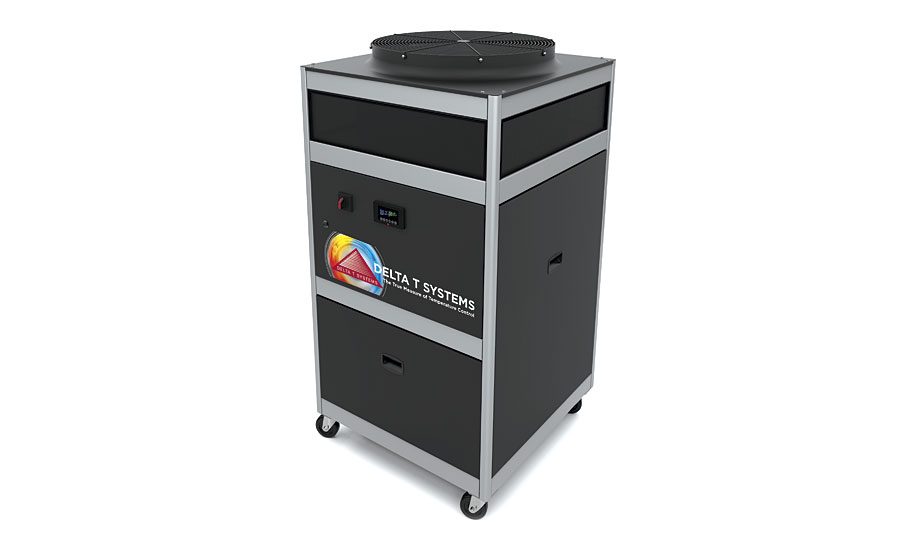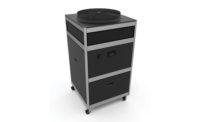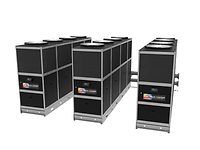New Technology and Advanced Controls Bring Energy Efficiency to Industrial Chiller Equipment


FIGURE 1 » Annual cost saving comparison of fixed- and variable-speed systems.


Chillers have been in use for many years in industrial applications that include paint and coating manufacturing, chemical processing, food and beverage processing, cosmetics production, various plastic processes, die-casting and machine tooling, pharmaceutical formulation, vacuum systems, and power supplies. Until recently, chillers used in these applications have all been driven by fixed-speed motors and quite rudimentary control systems. While these performed adequately, maintenance requirements and operating costs tended to be quite high.
Chillers with variable-speed drives have been used for more than a decade in commercial air conditioning equipment. However, the use of these drives is not yet common in other industrial applications, as variable-speed chillers have not been available for these applications. This is beginning to change, as the inherent benefits of variable-speed drives have been recognized, and the evolution in control hardware, software and sensors has opened the door to great improvements in industrial chiller reliability, accuracy and energy efficiency.
It is the combination of improvements in each of the systems’ componentry that has resulted in significant performance gains in a new generation of industrial chillers. Let’s look at each area in detail to get an understanding of the progress that has been made.
Variable-Speed Drives with Integral Power Electronic Controls
A drive is an electronic control device used to vary the speed of an electric motor. The controller provides pulses of current to motor windings that control the speed and torque of the motor.
Variable-speed technology has four main benefits: it protects motors from main power supply spikes and shocks; it eliminates shocks induced by full power-on starts and stops; it allows operating torque and speed to be continuously varied to match operational requirements throughout a production cycle; and finally it provides unmatched, precise temperature control.
This type of a system is therefore able to protect itself from mechanical wear and tear or electrical failure in ways that traditional, fixed-speed compressor motors cannot. Since a drive constantly monitors and adjusts the power required of a chiller’s compressor motor to optimize operation, electrical power consumption is typically reduced by 30% to 50% (Figure 1).
New chiller systems also use variable-speed condenser fans; by using various on-board sensors to monitor the refrigeration system, a controller varies the speed of the condenser fan to ensure it operates at the most efficient point.
A variable-speed condenser fan also protects the compressor by monitoring the discharge pressure of the system, which keeps the compressor in the ideal operating envelope.
Electronic Commutated Motors (ECM)
Also known as brushless DC motors, these units are the latest development for condenser fan motors. They are the quietest, most efficient and most reliable motor technology available to industry today.
Adaptive Controls
The current generation of process controllers brings significant improvements to the industrial chiller systems that have appeared on the market in recent months. The controllers use several application-specific algorithms to control both motors and related valves at an optimally efficient operating point while protecting the compressor.
New, faster hardware, dedicated software, along with sensor and ECM technology improvements enable the latest generation of chillers to control process temperatures within 0.5 °F.
Adaptive control capabilities are also very important in cases of operational issues. Thanks to adaptive controls, the chiller portion of a production system can continue to operate at reduced capacity, but will not shut down, thus ensuring continued production.
Electronic Expansion Valves
This technology works in conjunction with variable-speed drives, compressors and controls to precisely tune the valve to the system needs. Electronic expansion valves are driven by a DC stepper motor that typically has quarter-turn increments. The motor is used to move a pin up and down to allow more or less refrigerant flow through the valve port. It is much more precise since it is controlled directly from the controller using the temperature and pressure sensors as feedback.
Data Collection and Communication
Along with run-time control capabilities, current controllers are also capable of collecting and communicating large amounts of operational data, improving performance and enabling close integration into an overall process control system.
Data sets include information about suction and discharge pressures and temperatures, entering and leaving water temperatures, tank level, pump pressure, compressor drive output, fan output, pump status, compressor amps, volts, phase monitoring, and all alarms.
Captured information can be used either for real-time control adjustments, diagnostics and alarming, or for historical analysis.
Communication capabilities include industrial network interfaces and cloud-based distribution to remote PCs, tablets, or phones to facilitate supervision and remote diagnostics and maintenance. The chiller is ready for Industry 4.0.
Other Design Improvements and Material Considerations
While control system improvements contribute to significant operational cost improvements, a judicious set of design improvements and material selections makes the new generation of industrial chillers less susceptible to traditional maintenance problems, and easier to maintain.
Stainless steel and copper brazed evaporators have more plates and larger surfaces that lower compressor demand and make the overall system more efficient. Microchannel aluminum condenser coils eliminate galvanic corrosion typical of the traditional copper tube and aluminum fins coil construction. Units include all nonferrous chilled water piping that will not rust. And cleanable condenser air inlet filters, evaporator strainers and refrigerant filter/dryer reduce contaminant incursion and significantly reduce maintenance requirements.
Footprint Reduction
Facility floor space is always a premium in industrial applications, especially in the chemical processing industry. This combination of highly efficient componentry allows advanced chiller designs to physically require less space. Not only does the chiller cabinet require less space, the four-sided air intake eliminates the standard three-foot perimeter clearance of vintage chiller designs. Maintenance and facility managers express sincere appreciation for the extra floor space, which could be as much as a +50% reduction.
Conclusion
Recently introduced industrial chiller systems incorporate a significant series of hardware, software, material usage and design improvements. The combination of improvements in each of these domains has led to a significant overall performance improvement for this type of equipment. Operating cost reductions of 30% to 50%, reduced maintenance costs, operational accuracy and consistency, as well as improved integration and communication capabilities, add up to a great step forward for processes applications that incorporate chillers in their production systems.
While this technology is becoming available, few of the industry’s chiller manufacturers offer either standard or custom variable-speed products. According to Rick Holzhauer, Delta T Systems’ Chief Engineer, the company is one of the suppliers that offer both approaches. Many systems can use standard 5-, 10-, 15- or up to 30-ton chillers to run their process efficiently. For other applications, completely custom designs may be more effective.
For more information about Delta T Systems, please visit www.deltatsys.com.
Looking for a reprint of this article?
From high-res PDFs to custom plaques, order your copy today!








